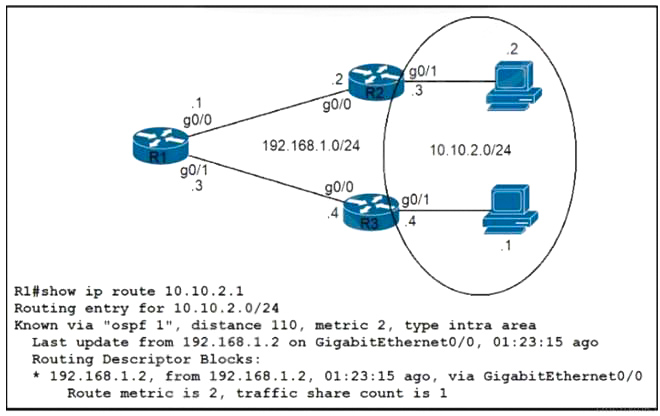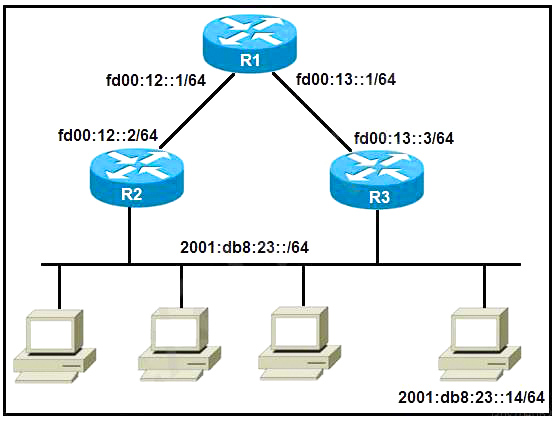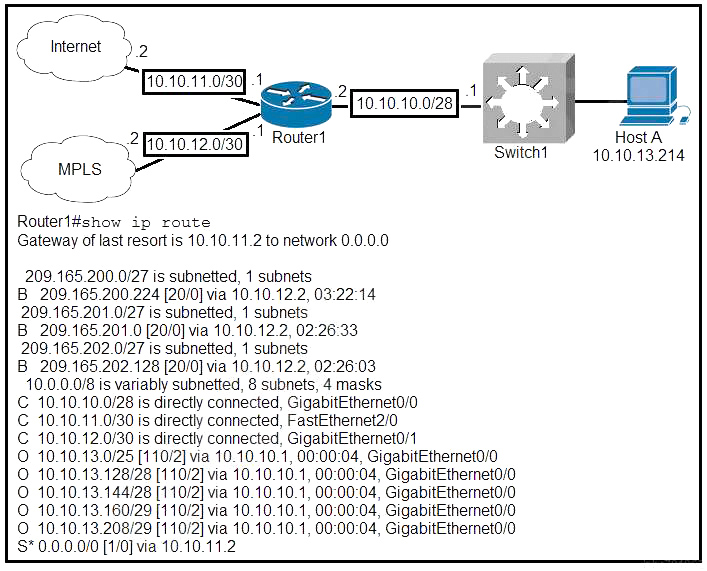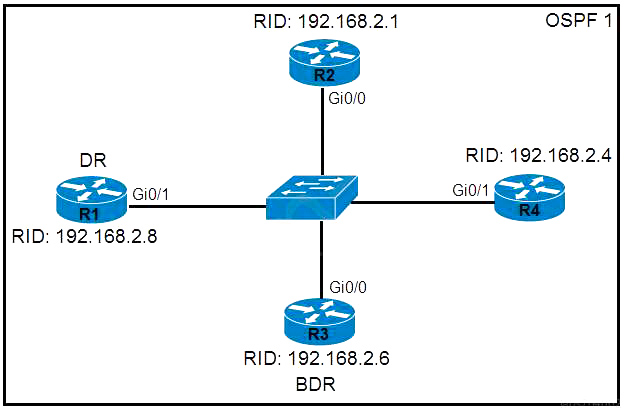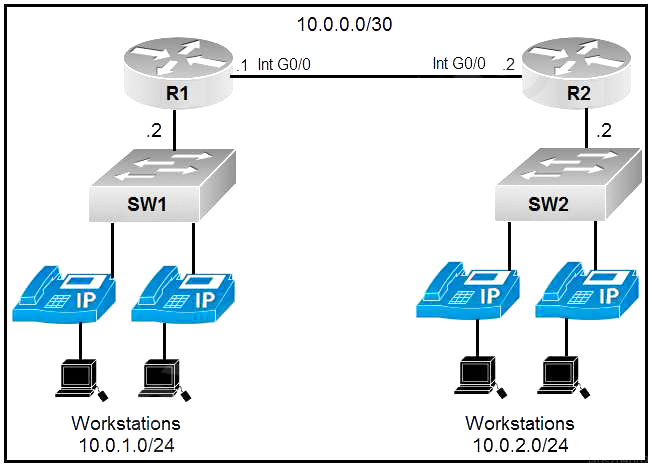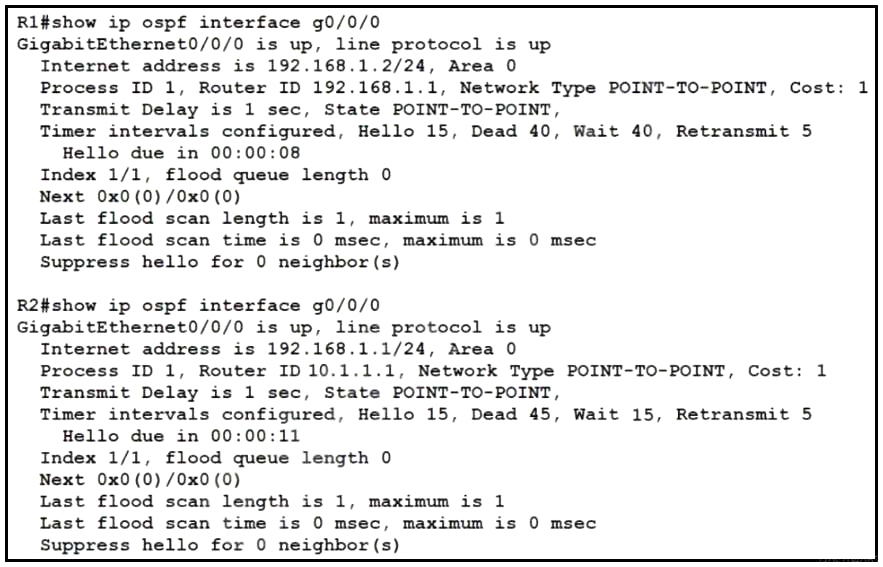
Refer to the exhibit. All interfaces are configured with duplex auto and ip ospf network broadcast. Which configuration allows routers R14 and R86 to form an OSPFv2 adjacency and act as a central point for exchanging OSPF information between routers?
A. R14#
interface FastEthernet0/0
ip address 10.73.65.65 255.255.255.252
ip ospf priority 255
ip mtu 1500
router ospf 10
router-id 10.10.1.14
network 10.10.1.14 0.0.0.0 area 0
network 10.73.65.64 0.0.0.3 area 0
R86#
interface FastEthernet0/0
ip address 10.73.65.66 255.255.255.252
ip mtu 1400
router ospf 10
router-id 10.10.1.86
network 10.10.1.86 0.0.0.0 area 0
network 10.73.65.64 0.0.0.3 area 0
B. R14#
interface Loopback0
ip ospf 10 area 0
interface FastEthernet0/0
ip address 10.73.65.65 255.255.255.252
ip ospf 10 area 0
ip mtu 1500
router ospf 10
ip ospf priority 255
router-id 10.10.1.14
R86#
interface Loopback0
ip ospf 10 area 0
interface FastEthernet0/0
ip address 10.73.65.66 255.255.255.252
ip ospf 10 area 0
ip mtu 1500
router ospf 10
router-id 10.10.1.86
C. R14#
interface FastEthernet0/0
ip address 10.73.65.65 255.255.255.252
ip ospf priority 0
ip mtu 1500
router ospf 10
router-id 10.10.1.14
network 10.10.1.14 0.0.0.0 area 0
network 10.73.65.64 0.0.0.3 area 0
R86#
interface FastEthernet0/0
ip address 10.73.65.66 255.255.255.252
ip mtu 1500
router ospf 10
router-id 10.10.1.86
network 10.10.1.86 0.0.0.0 area 0
network 10.73.65.64 0.0.0.3 area 0
D. R14#
interface Loopback0
ip ospf 10 area 0
interface FastEthernet0/0
ip address 10.73.65.65 255.255.255.252
ip ospf priority 255
ip ospf 10 area 0
ip mtu 1500
router ospf 10
router-id 10.10.1.14
R86#
interface Loopback0
ip ospf 10 area 0
interface FastEthernet0/0
ip address 10.73.65.66 255.255.255.252
ip ospf 10 area 0
ip mtu 1500
router ospf 10
router-id 10.10.1.86
